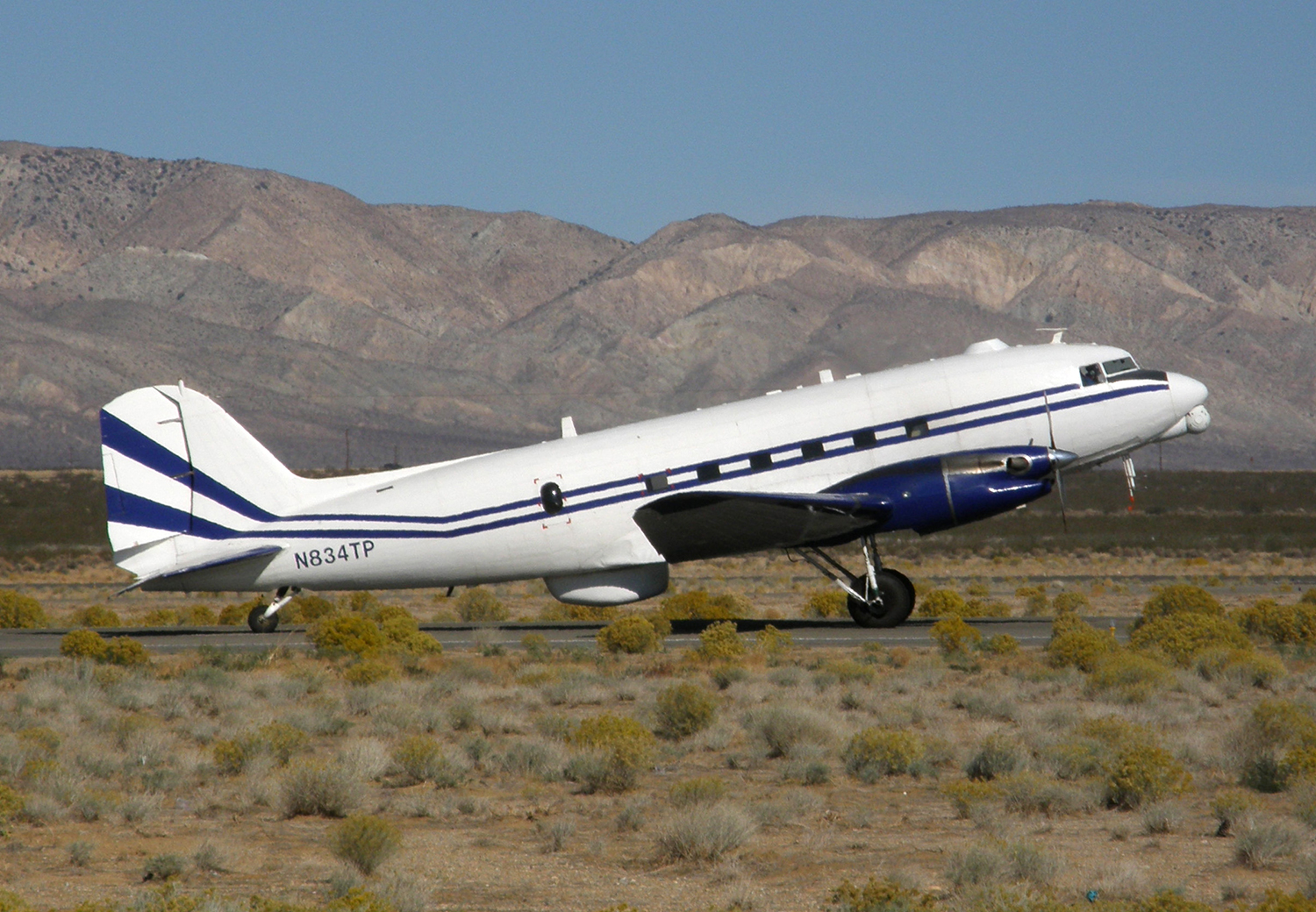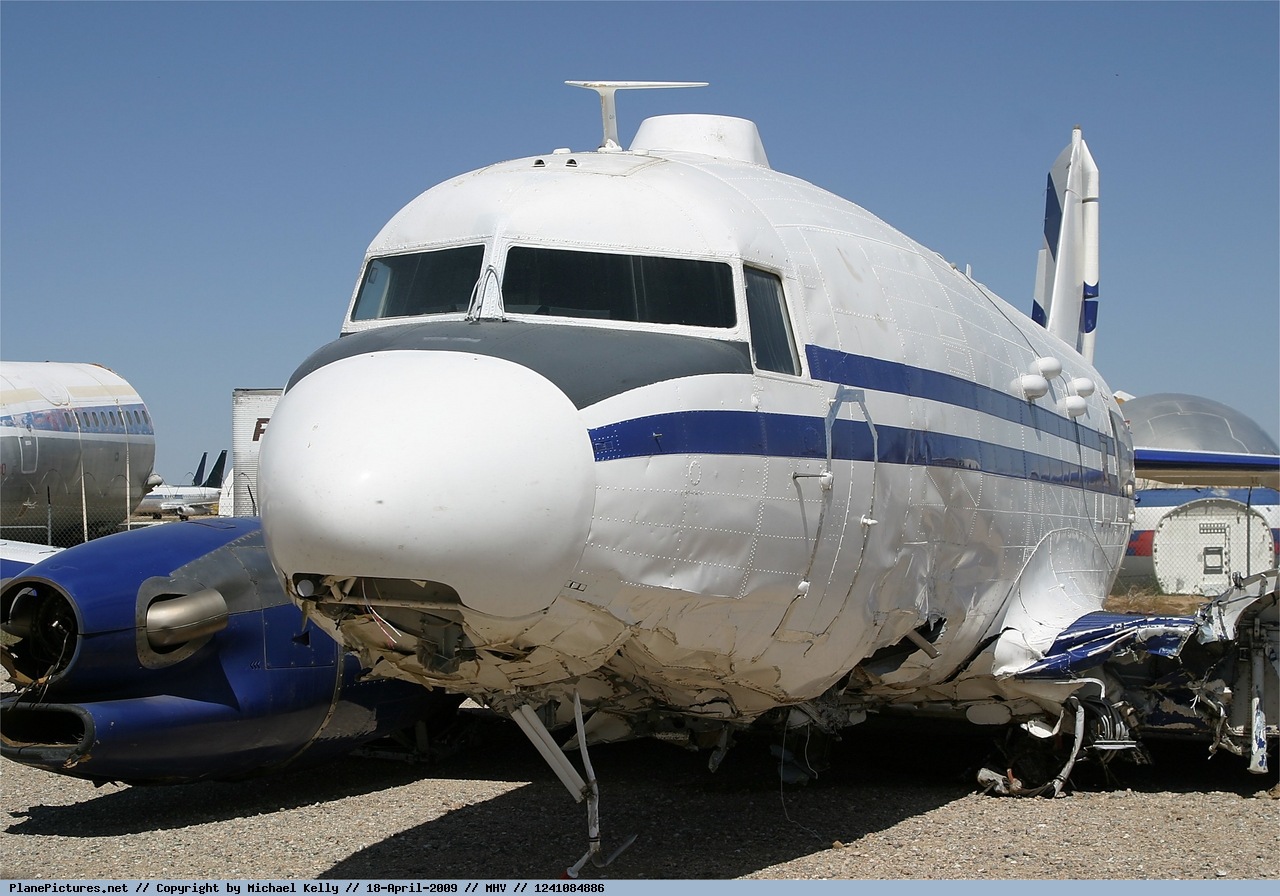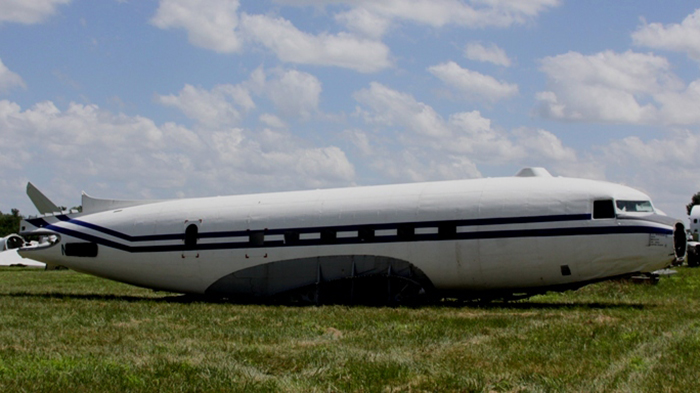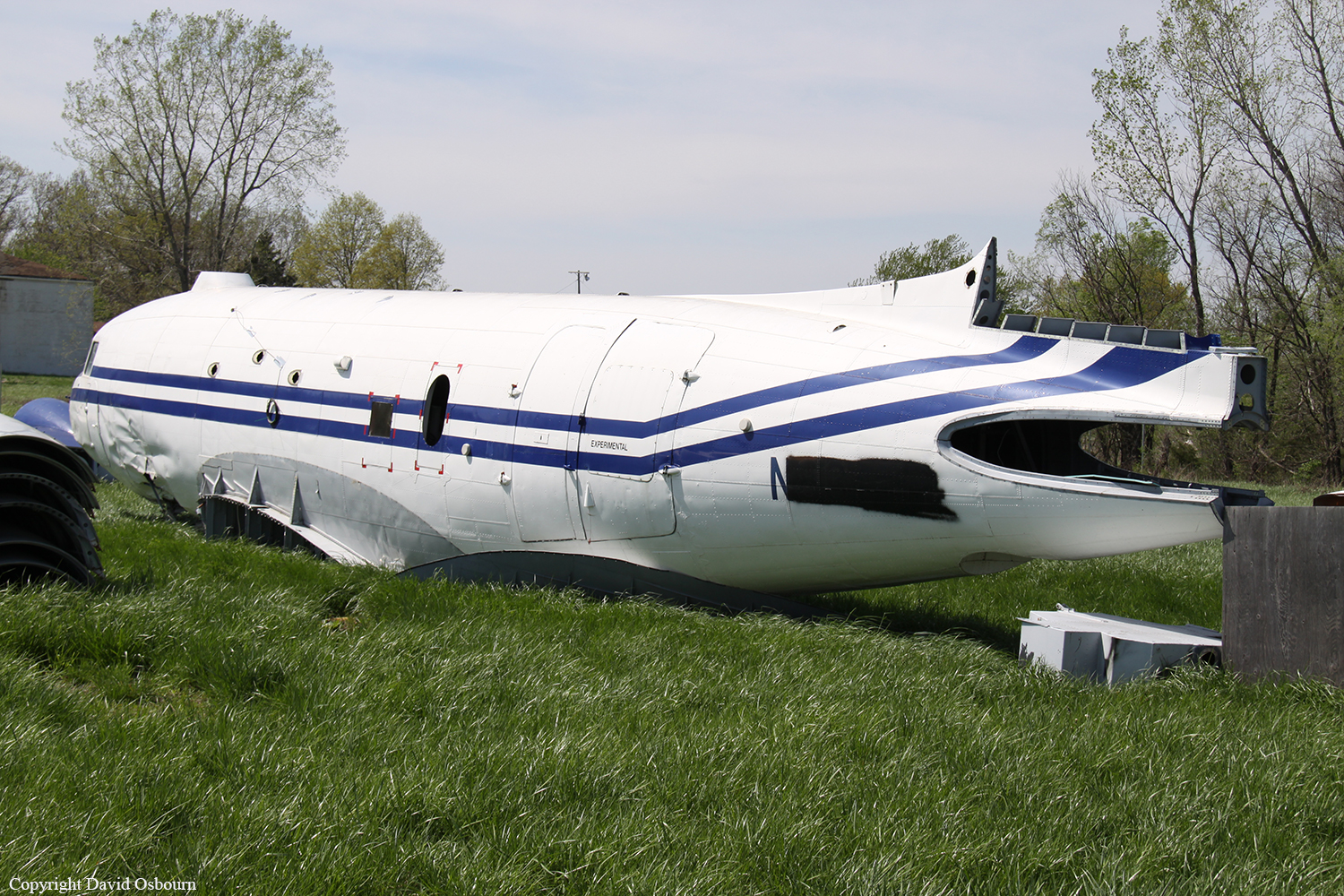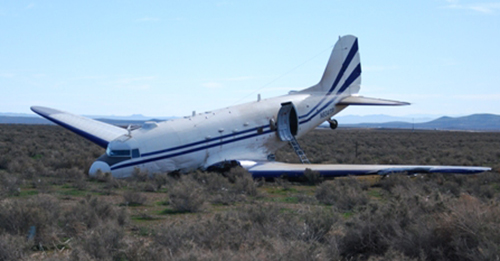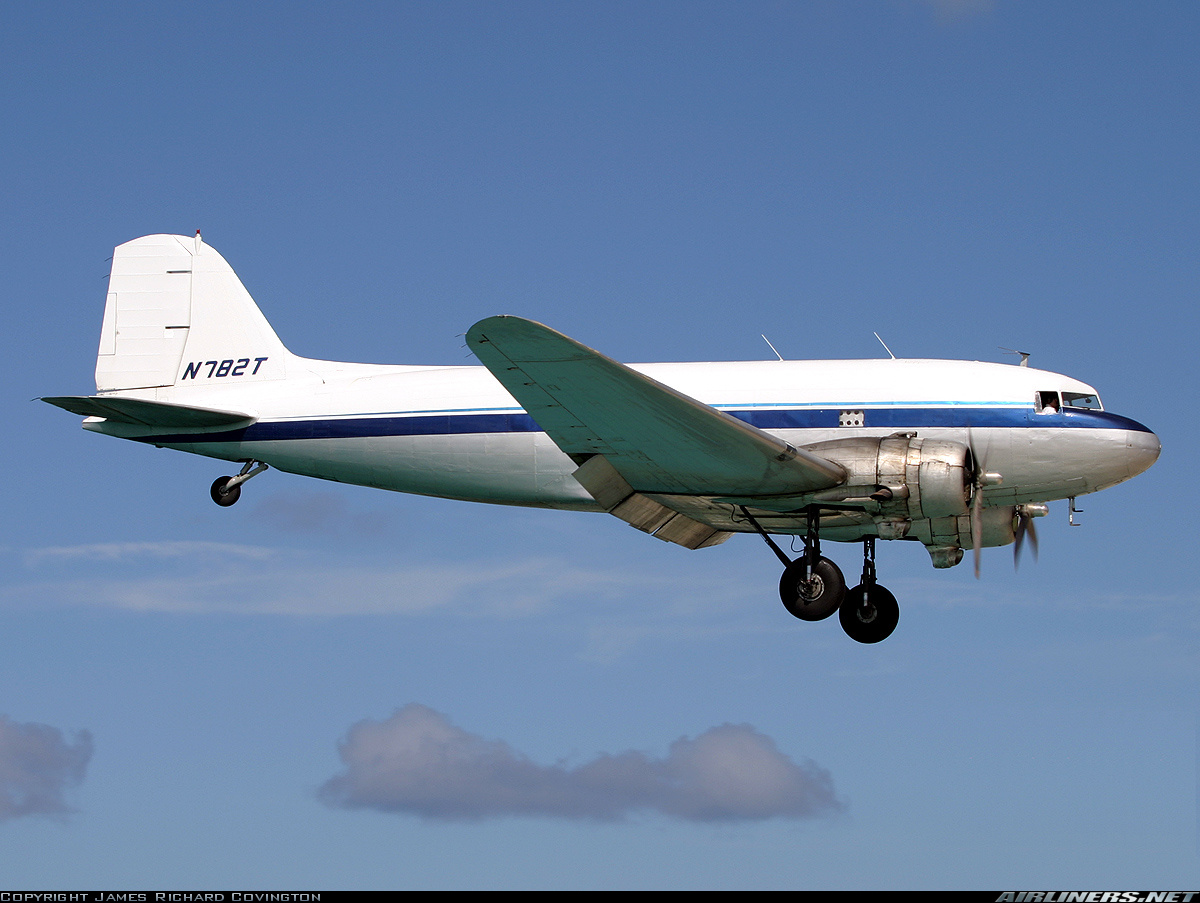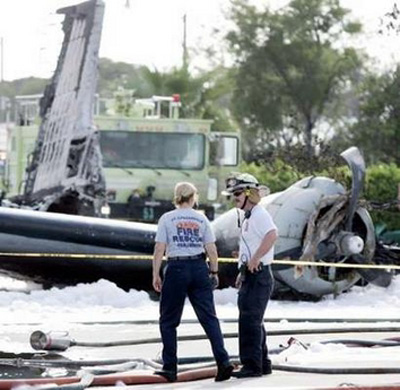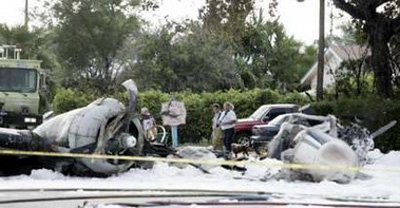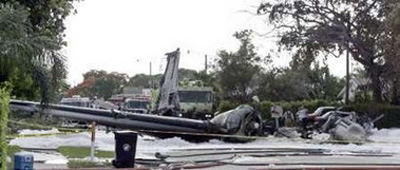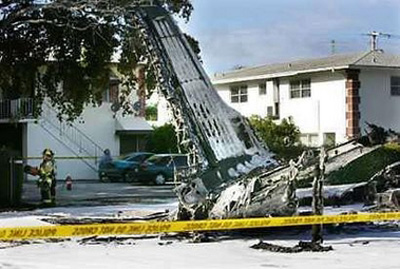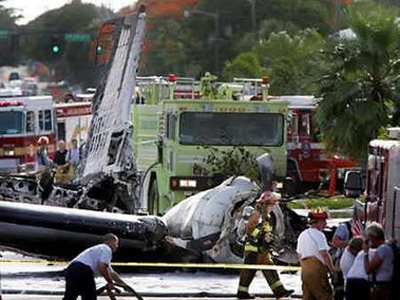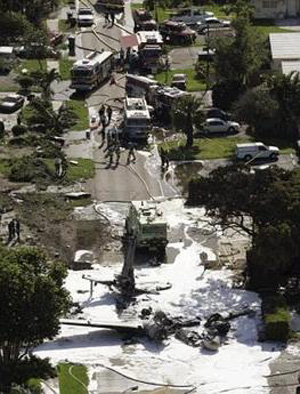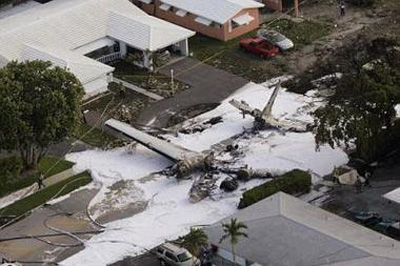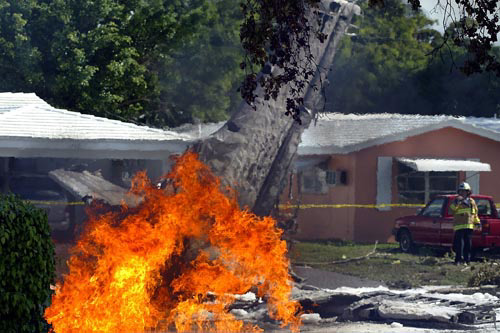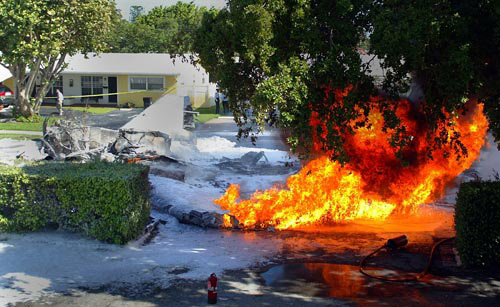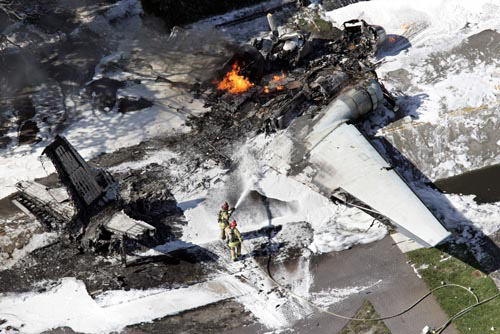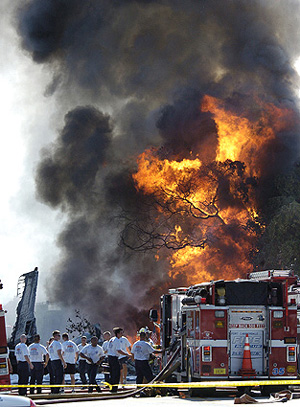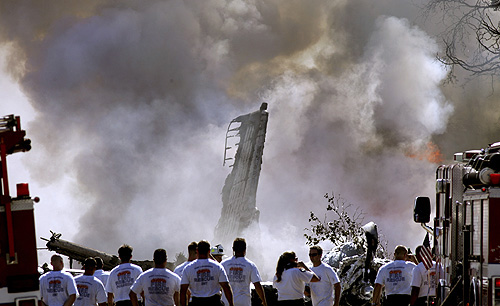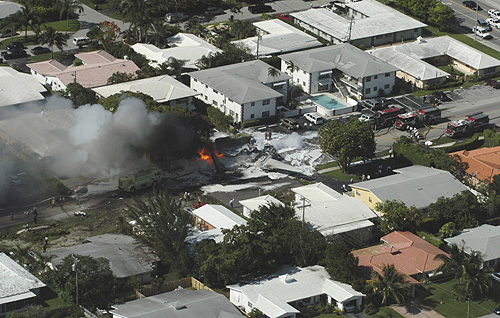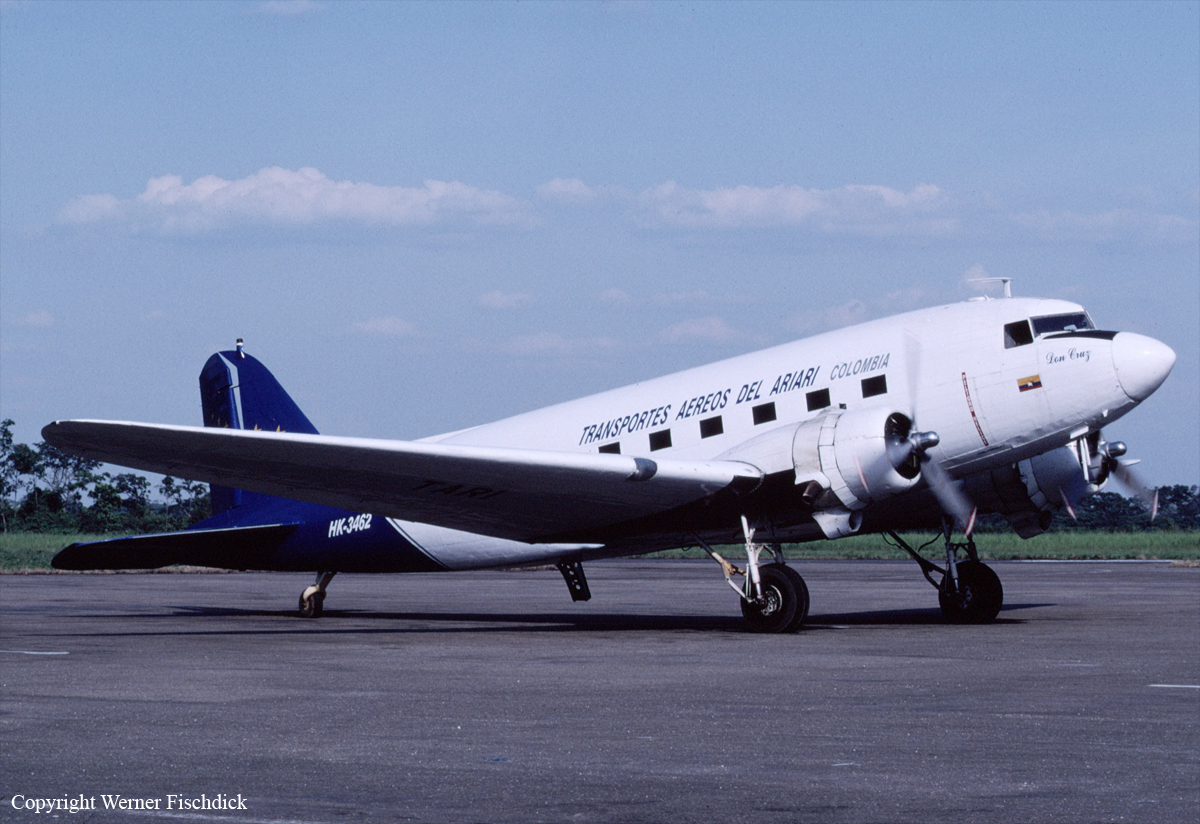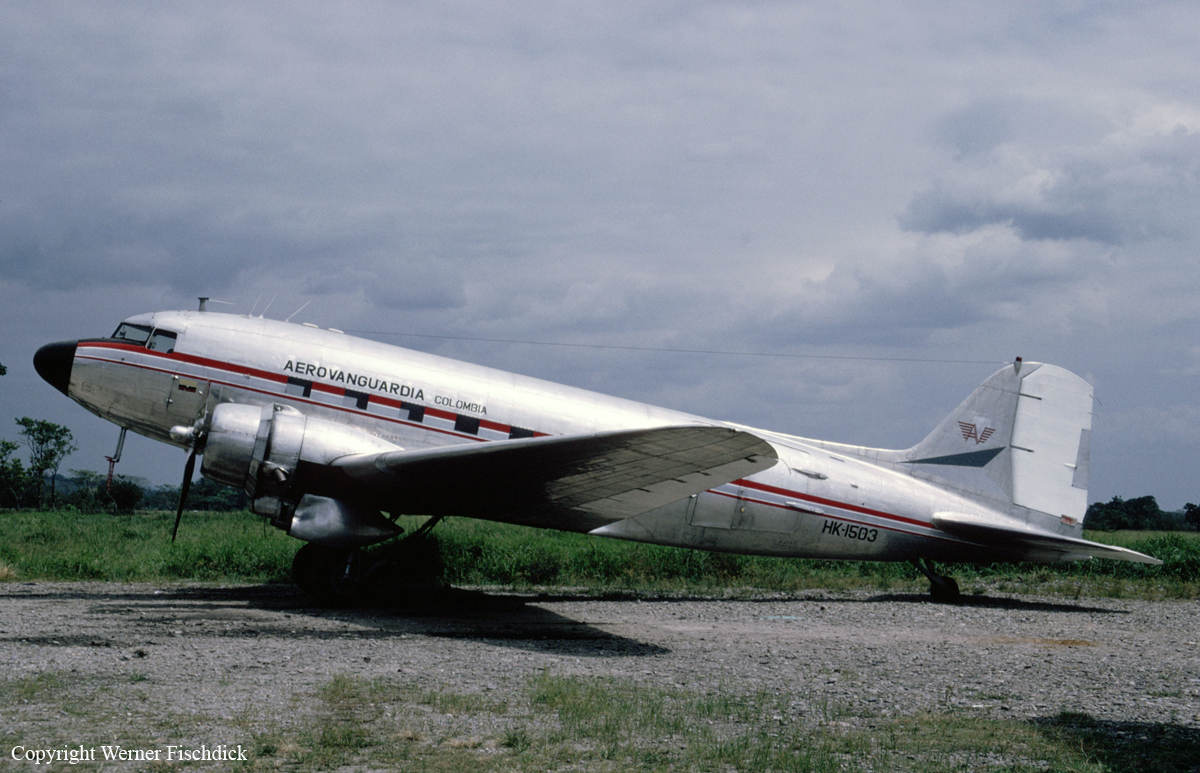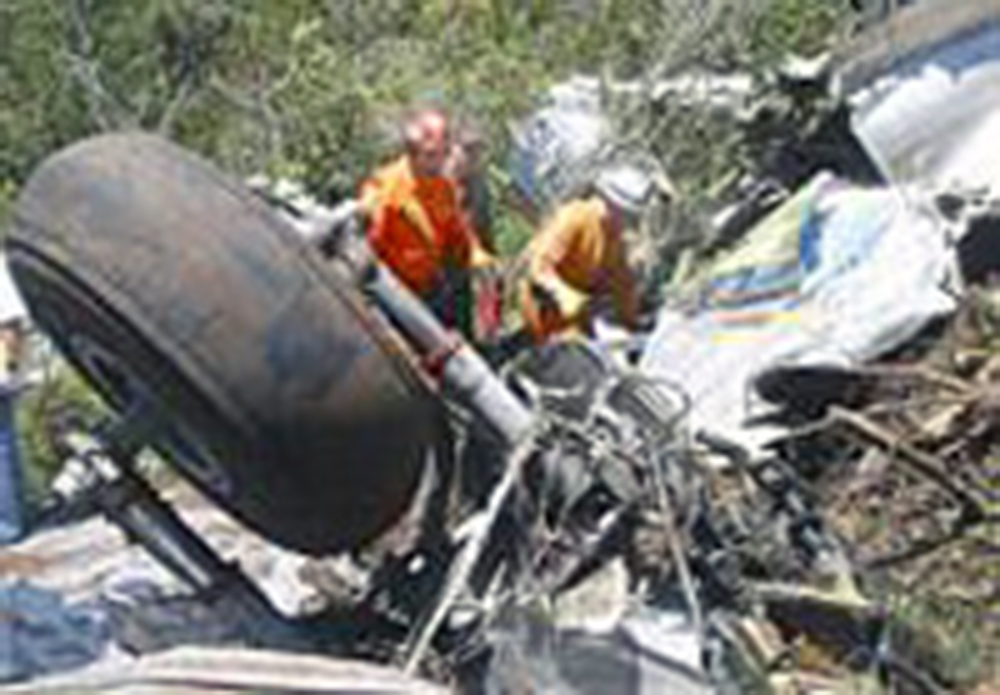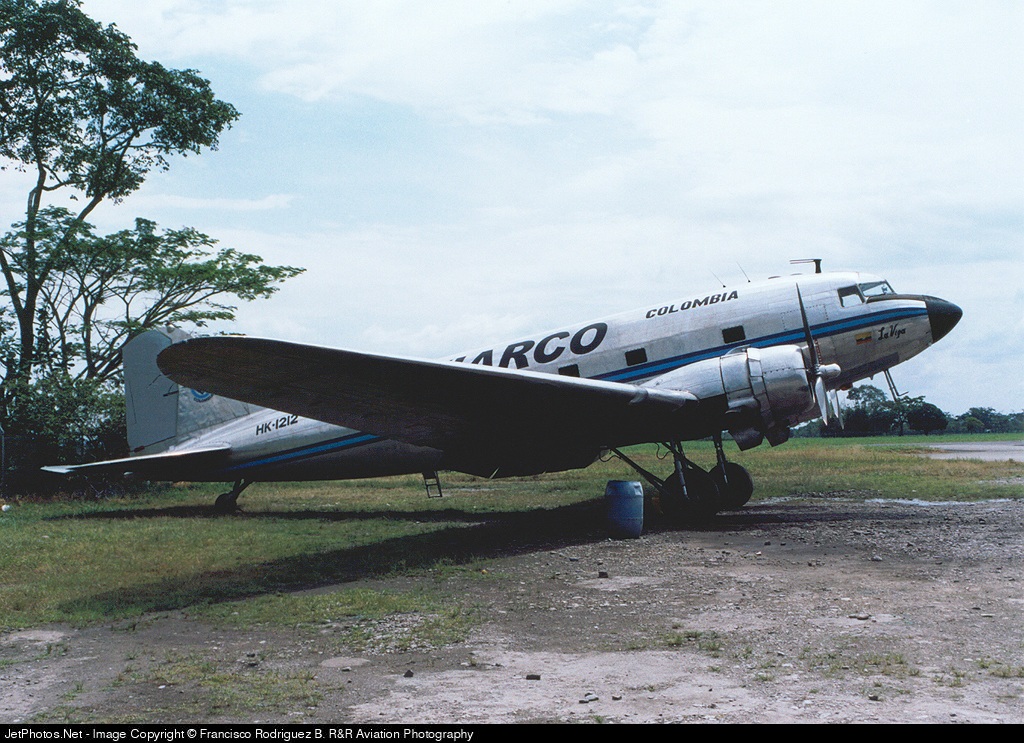Crash of an AMI Turbo DC-3-65TP in Mojave
Date & Time:
Feb 4, 2009 at 0852 LT
Registration:
N834TP
Survivors:
Yes
Schedule:
Mojave - Mojave
MSN:
12590
YOM:
1947
Crew on board:
2
Crew fatalities:
Pax on board:
0
Pax fatalities:
Other fatalities:
Total fatalities:
0
Captain / Total hours on type:
1326.00
Aircraft flight hours:
17277
Circumstances:
During the takeoff roll, the airplane began to drift to the right. Despite the certified flight instructor's and student's attempts, they were unable to stop the yaw and drift. As the airplane was about to depart the runway, the pilots did not reduce the throttles or apply brakes as they felt that it would be safer to attempt to get airborne. After departing the runway surface, the airplane collided with a series of berms, which sheared off the left landing gear and left engine. The right landing gear collapsed, and the airplane came to rest in a nose down attitude. Post accident e examination revealed that the student pilot had inadvertently set the rudder trim to the full right position when he adjusted the rudder pedals during the prestart checks. The rudder trim was in the full right position for the takeoff, and found in the same position upon post accident inspection.
Probable cause:
The student pilot failed to follow the checklist and set the takeoff trim properly prior to takeoff resulting in a loss of directional control. Contributing to the accident were the certified flight instructor's inadequate supervision and delayed remedial action.
Final Report:
